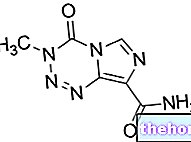Definition
In the medical field, the term "leukemia" refers to a complex neoplasm of the blood, in which there is an unregulated proliferation of hematopoietic stem cells, found in the bone marrow. Myeloid leukemia (alteration of the synthesis of granulocytes and monocytes - white blood cells - red blood cells and platelets) is distinguished from the lymphoid form (which damages lymphocytes).
Causes
Since it is a cancer, the causes responsible for leukemia still represent unresolved questions; however, some risk factors have been identified which, although not directly related to the onset of blood cancer, exponentially increase the probability of contracting it: some types of anemia, chemotherapy associated with radiotherapy, smoking, inhalation of toxic substances (eg heavy metals), ionizing radiation, Down syndrome.
Symptoms
Symptoms vary according to the severity and form in which the leukemia occurs; sometimes, the disease remains silent (asymptomatic) for a long time. In acute forms, the symptoms are violent: body temperature alteration, asthenia, bone pain, weight loss, abdominal pain, headache, bleeding tendency, splenum / hepatomegaly.
- Complications: severe anemia, bleeding (due to thrombocytopenia) and infections (due to lack of white blood cells)
Information on Leukemia - Leukemia Treatment Drugs is not intended to replace the direct relationship between health professional and patient. Always consult your doctor and / or specialist before taking Leukemia - Leukemia Treatment Drugs.
Medicines
In the context of leukemia, the choice of one treatment rather than another depends on the type of cancer, the cells involved, the degree of advancement of the tumor and the age of the patient. Conventional chemotherapy is a widely used therapeutic option for treatment of leukemia, although some patients are also treated simultaneously with radiotherapy and / or biological therapy. In severe cases, stem cell transplantation can be a viable alternative.
The following are the classes of anticancer drugs most used in the therapy against leukemia, and some examples of pharmacological specialties; it is up to the doctor to choose the most suitable active ingredient and dosage for the patient, based on the severity of the disease, the state of health of the patient and his response to treatment:
- Daunorubicin (eg Daunoblastina, DaunoXome): particularly suitable for the treatment of acute myeloid and acute lymphoid leukemia. The dosage indicated is 45 mg / m2, to be administered by intravenous infusion of 2-5 minutes, once a day on days 1-2-3 in the first cycle and 1-2 in the following cycles. Decrease the dose if the patient is over 60 years old. Consult your doctor. Often times, this drug is combined with other chemotherapy drugs such as cytarabine (eg Depocyte). As an alternative to daunorubicin it is possible to administer idarubicin (eg Zavedos).
- Cladribine (eg. Litak): indicated for the treatment of hairy cell leukemia (caused by an "overproduction of B-lymphocytes). Indicatively, the recommended dose is 0.14 mg / kg, intravenously, to be taken once a day. say for 5 days Use the drug with caution, especially in patients over 65 years of age.
- Interferon Alfa-2b (eg Intron-A): this drug, obtained exclusively with a doctor's prescription, belongs to the pharmaceutical class of interferons and is prescribed both for the treatment of some forms of hepatitis, and for the treatment of chronic myeloid and cellular leukemia hairy. The dose, always indicative, is as follows: 2-20 million IU / m2 of body surface, three times a week, alternating one day of treatment with one of rest. Treatment is generally continued for 6 months, or until symptoms are resolved without signs of severe toxicity.
- Nilotinib (eg Tasigna): useful for the treatment of chronic myeloid leukemia. The anticancer drug (protein kinase inhibitor) is not the first choice, but is used when the other drugs do not benefit the patient. It is recommended to take the drug in the form of 200 mg tablets, twice a day, every 12 hours, preferably on an empty stomach, two hours before a meal.
- Dasatinib (e.g. sprycel): this drug, like the previous one, is also a protein kinase inhibitor and is available in the form of 20-50-70-100 mg tablets. Its administration is recommended for the acute lymphoblastic form and for the chronic myeloid form of leukemia: start with 100 mg of drug once a day; change the dosage during the course of the disease, under strict medical supervision.
- Rituximab (eg MabThera): in addition to treating non-Hodgkin's lymphoma and rheumatoid arthritis, this active ingredient (monoclonal antibody) is indicated for the treatment of a form of leukemia called lymphoblastic lymphoma. It is recommended to take the drug by IV infusion. , at the dosage of 375 mg / m2 (initial dose) + 5 doses of 500 mg / m2 It is recommended to always administer an antihistamine and a painkiller before each dose of the drug, to avoid allergic reactions and reduce pain.
- Imatinib (eg Glivec): indicated for the treatment of chronic myeloid and acute lymphoblastic leukemia. It is recommended to take the drug orally (tablets of 50-100-400 mg) at a dosage of 50-400 mg once-twice a day, during the meal. Do not exceed 800 mg per day. Consult your doctor: the posology just described is indicative.
- Clofarabine (eg Evoltra): the drug (cytotoxic) should be taken by intravenous infusion through a drip into a vein. It is one of the most used drugs to treat leukemia in children: 52 mg / m2 as a two-hour infusion, for 5 days. Repeat administration every 2-6 weeks.
- Arsenic trioxide (eg Trisenox): the drug is administered by infusion in patients with acute promyelocytic leukemia. The product is available in the form of concentrate to be reconstructed in solution (1mg / ml) and should be taken by infusion of 0.15 mg / kg every day, until the symptoms improve. After the first 50 days of treatment, the patient must interrupt the treatment, even in the absence of benefits: the treatment must be interrupted for 21-28 days and administered again once a day for 5 days, followed by 2 days of rest. Continue with this line for 5 weeks.
- Histamine dichlorohydrate (eg Ceplene): available as a 0.5 mg / 0.5 ml solution for injection, the drug is often used for the treatment of acute myeloid leukemia in combination with interleukin-2. Take the drug twice a day , subcutaneously (in the abdomen or thigh) at a dose of 0.5 mg, 1-3 minutes after the injection of interleukin-2. Repeat the administration for three weeks, followed by a further three weeks of rest. Repeat this pattern for three cycles, then take the drug for another 7 cycles, each consisting of 21 days of treatment followed by 56 days of rest.
- Chlorambucil (eg. Leukeran): the dosage of this drug varies from 0.1 to 0.2 mg / kg. It should be taken by mouth, every day, for 3-6 weeks. The dosage can be changed by the doctor during illness. The administration of this active is indicated for the treatment of chronic lymphocytic leukemia.























-nelle-carni-di-maiale.jpg)




